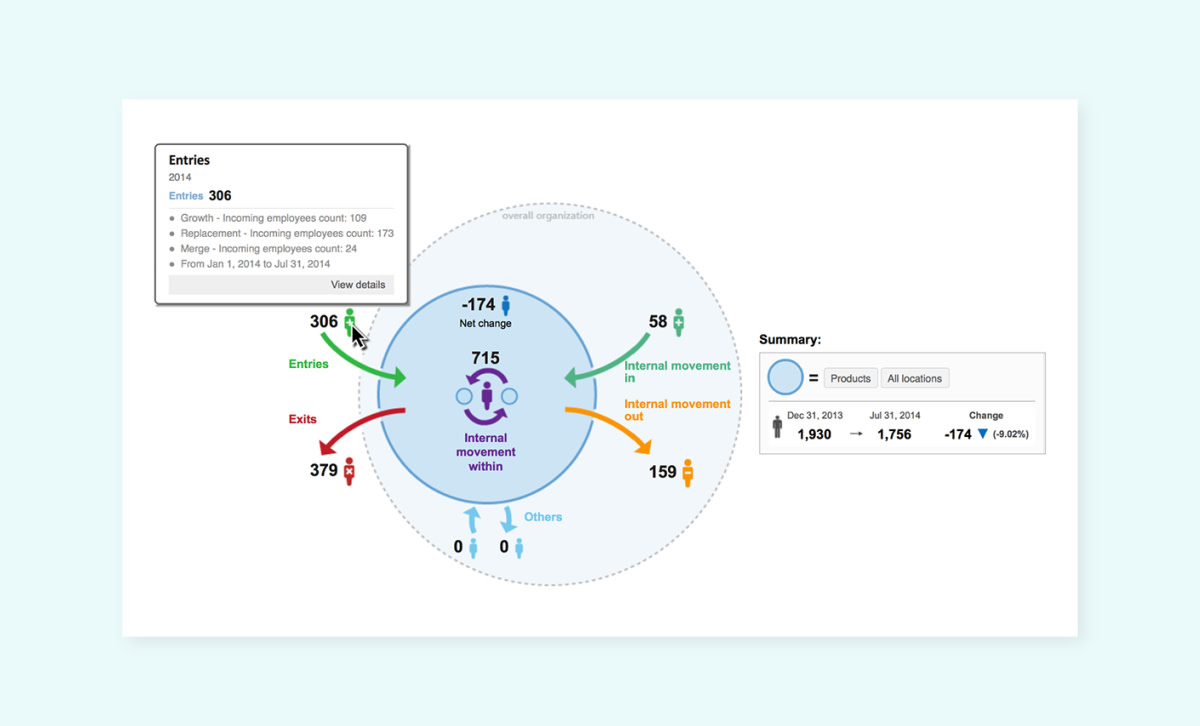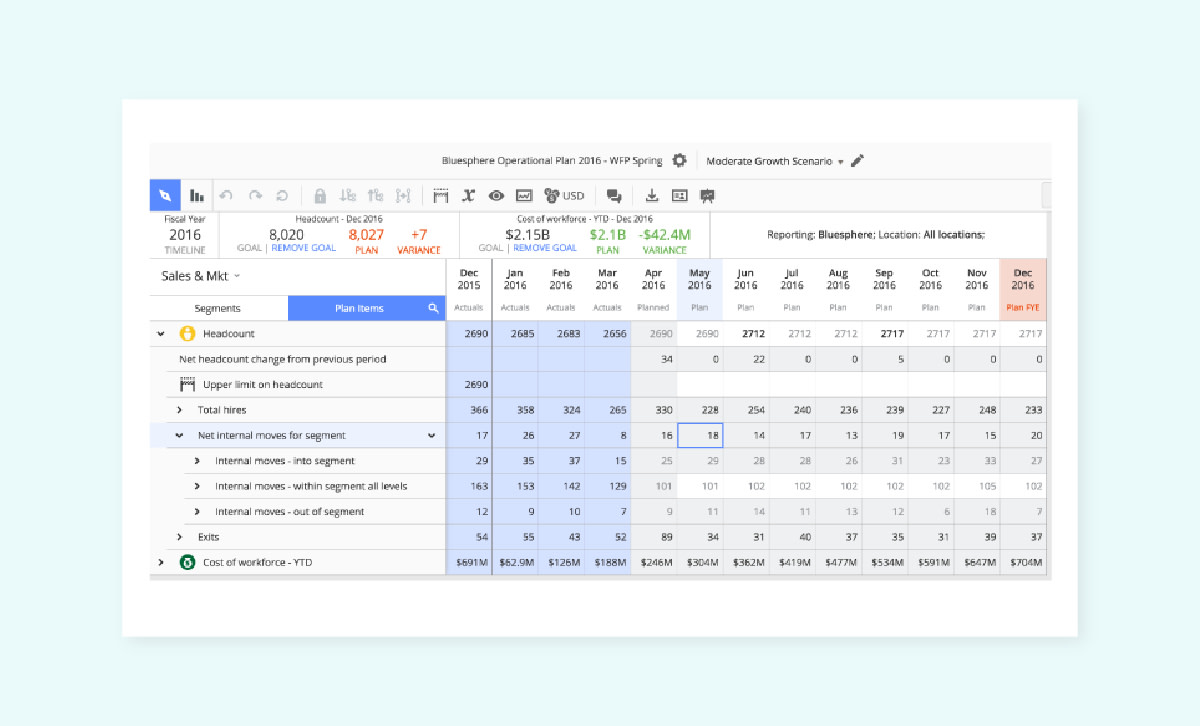Workforce Planning Collaboration: The Talent Acquisition and HR Partnership
HR collaboration is key to workforce planning. HRBPs and talent acquisition must work together with finance to make workforce plans.

It’s no secret that the success of many HR activities rely on effective collaboration. Whether an HR team is working on compensation and benefits, career development, or performance management, it needs to take into account input from all stakeholders involved, including employees, their managers, and Finance, among others.
But there’s a case to be made that workforce planning is the one process that creates the highest level of risk for the organization if stakeholders don’t work together adequately.

HR Collaboration: HRBPs, Talent Acquisition, and Finance
Workforce planning, in a nutshell, is the process of ensuring that the business employs the right staff at the right time and at the right cost—and given that people costs make up the largest chunk of the budget for a typical organization, getting the workforce plan right is fundamental to its fiscal health.
The challenge for HR, however, is that creating a workforce plan requires juggling a staggering number of inputs. First and foremost is the budgetary input from Finance. In a typical organization, Finance is in charge of providing the cost or headcount limits for each department. Finance passes the ball to HR, and HR uses their workforce expertise to refine the plan. But despite their deep understanding of talent, HR can’t create an effective plan on their own. HR in turn needs input from the departments they support—like sales, marketing, and product—to better understand talent and timing needs for each department before nailing down a workable plan.
The workforce planning collaboration can’t come to a halt once the plan has been created. In terms of executing the plan, the game has only begun. Once HR and Finance have had the plan approved and have confirmed that it meets the needs of their stakeholders and the company, there’s a key next step: They need to provide the outputs of the plan to the talent acquisition team—the team responsible for delivering on the headcount targets in the plan.
On the surface, it may seem like the recruiting team has a straightforward task. If a department has 100 people and the target for the new year is 110, simple math suggests that 10 new people need to be hired. But that simple math belies the complexities beneath the surface. And those complexities—hidden by the recruiting team’s limited view of hiring requirements—are what create significant risk for the organization: Over-hiring can create an unnecessary cost burden, while under-hiring can reduce productivity.
To decrease risk and create a realistic plan that ensures the company meets its hiring targets, workforce planners in HR need to align with the talent acquisition team in three key ways:
1. Account for net exporters of talent
At many organizations, there’s a not-so-well-kept secret in recruiting: Some departments are notorious for providing new hires with so-called gateway jobs: positions that new hires keep for a short time but then jettison in exchange for more desirable jobs elsewhere within the company. For instance, at software companies, new recruits might start in the QA department but have their sights set on a development role. At other organizations, people who join the customer support team may stay in their positions just long enough to land other roles that are a step up the ladder. One of our customers recently discovered the extent of this effect: One particular department was losing 25 to 30% of their employees to other teams each year.
Compounding the loss of employees to another department are exits from the company itself—when employees leave the organization either voluntarily or involuntarily. Added together, exits and internal moves can significantly change the hiring requirements implied by a net increase of 10 employees. If in a given department, for instance, 20 people exit the company and 20 move to another department, that means the recruiting team has to hire not 10 but 50 new employees to meet their annual target.
Workforce planners needs to account for predicted company exits and internal movements when providing department-by-department requirements to the recruiting team—or the recruiting team could severely underestimate the hiring capacity needed.

2. Account for net importers of talent
Looking at it from the opposite point of view, an organization may have a department that acts like a magnet for talent. It may be one of the teams, for instance, that new hires in gateway jobs eventually move to. Imagine, for instance, that one company’s sales team often staffs their account executive positions not only through external hiring but also by recruiting staff from their inside sales or telemarketing teams once they’re ready to move up. One of our customers communicated the importance of this need to us: “It’s great that we have a headcount goal, but how do we know that we won’t achieve the goal from people moving in from other departments?”
In other words, because the customer didn’t know how many existing employees were moving into the department, it was impossible to know how many external people to hire. If internal movement was already helping them reach their target, ramping up the recruiting team to do too much external hiring would have been unnecessary and wasteful.
To create a hiring plan that the talent acquisition team can execute on for departments that are net importers of talent, workforce planners need to be able to tell the recruiting team how many internal hires to expect due to movement into that department.

3. Monitor hiring and movement against plan
Accounting for net importers and exporters presupposes that it’s possible to know exactly how much internal movement will occur—and exactly how many employees will leave the company altogether. However, even the best workforce planners won’t be able to create perfect forecasts every time, so it’s just as important to track actual movement, exits, and hiring continuously.
That can be easier said than done—tracking actuals against a complex, company-wide workforce plan is a time-intensive proposition if a company hasn’t invested in modern workforce planning technology. But the fact remains that without a method for constantly gauging their progress, the recruiting team still risks over or under-hiring, putting either profits or productivity at risk. Workforce planners need a simple, intuitive way to communicate to the recruiting team how close they are to hitting their external hiring targets, given the actual internal movement and exits that have occurred.
All told, simple, intuitive collaboration is arguably what’s at the heart of decreasing the risk to the organization when it comes to workforce planning: A plan, no matter how accurate, is only as effective as how well it is shared.


